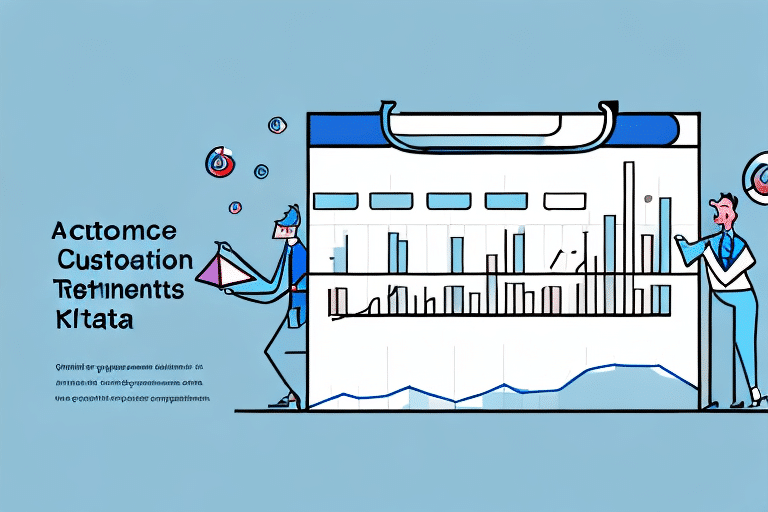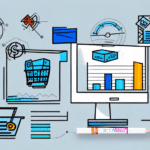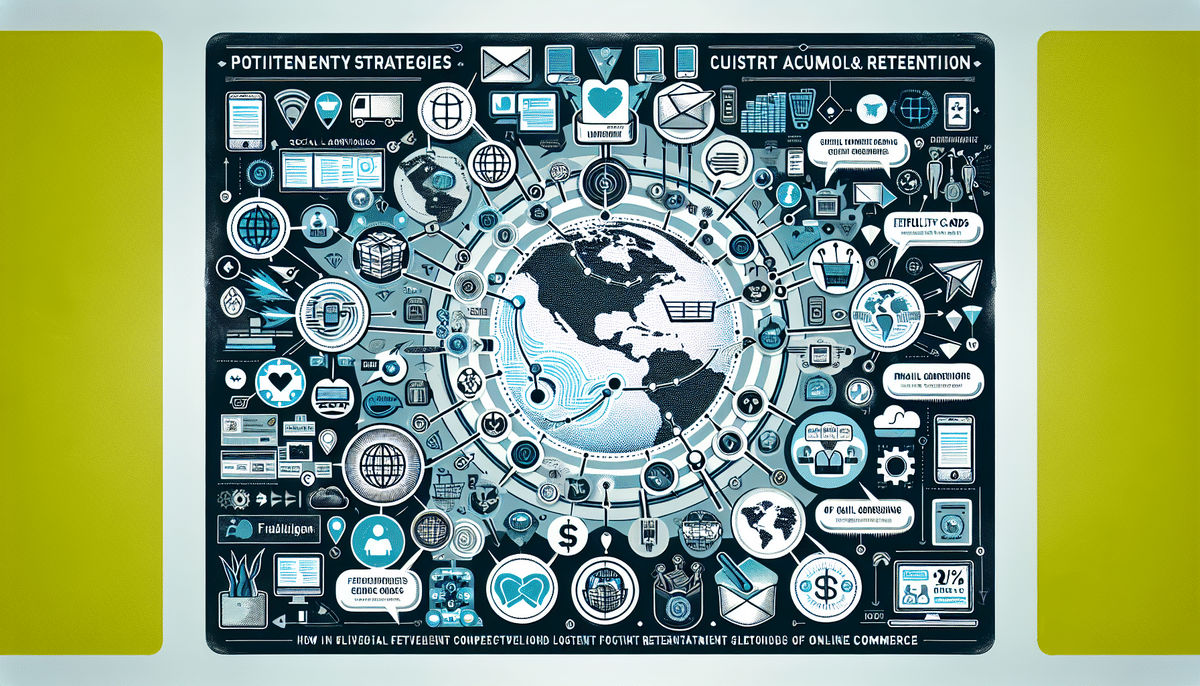Formula for Calculating Customer Retention KPIs
In today's highly competitive business landscape, customer retention has become a key focus for companies looking to maximize their profitability and growth potential. Retaining customers not only drives revenue and reduces customer acquisition costs, but also helps build brand loyalty and reputation. To measure the effectiveness of your customer retention strategies, you need to track important retention metrics, known as Key Performance Indicators (KPIs). In this article, we will explore the formula for calculating customer retention KPIs and why they matter for business success.
Why Customer Retention KPIs Matter for Business Success
Customer retention KPIs provide valuable insights into the health of your business, as well as the performance of your marketing, sales, and customer service efforts. They can help you identify factors that contribute to customer churn, such as poor product quality, unresponsive customer service, or a dissatisfactory user experience. By tracking retention KPIs, you can detect early warning signs of customer dissatisfaction and implement corrective actions before customers abandon your brand for a competitor.
Moreover, customer retention KPIs can also help you measure the effectiveness of your loyalty programs and customer engagement initiatives. Analyzing the data allows you to determine which programs are driving customer loyalty and which ones are falling short. This information can help you optimize your retention strategies and allocate resources more effectively. Additionally, tracking retention KPIs can provide valuable insights into customer behavior and preferences, allowing you to tailor your products and services to better meet their needs and expectations.
Understanding the Importance of Tracking Customer Retention Metrics
The ultimate goal of tracking customer retention KPIs is to increase customer lifetime value (CLV), which represents the total revenue a customer generates for your business over their entire relationship with your brand. A high CLV indicates that your customers are loyal and consistently generate revenue over time. Tracking retention metrics also allows you to monitor customer behavior and preferences and adjust your marketing and sales tactics accordingly. By understanding what drives customer loyalty and attrition, you can optimize your marketing and sales funnels and tailor your messaging to different customer segments.
Furthermore, tracking customer retention metrics can help you identify areas of improvement in your product or service offerings. By analyzing customer feedback and complaints, you can identify common pain points and address them to improve customer satisfaction and retention. Additionally, tracking retention metrics can help you uncover opportunities for upselling and cross-selling to existing customers, further increasing their lifetime value and driving revenue growth for your business.
Types of Customer Retention KPIs
There are several types of customer retention KPIs you should track to get a comprehensive view of your business performance. These include:
- Customer Retention Rate (CRR): This is the percentage of customers that continue to do business with your brand over a given period of time. The formula for calculating CRR is: [(CE - CN)/CS] x 100, where CE is the number of customers at the end of the period, CN is the number of new customers acquired during the period, and CS is the number of customers at the start of the period.
- Churn Rate: This is the percentage of customers that discontinue their relationship with your brand over a given period of time. The formula for calculating churn rate is: (Number of customers lost during the period / total number of customers at the start of the period) x 100. A high churn rate indicates that your business is losing customers faster than you are acquiring them, which can hurt your long-term growth potential.
- Customer Lifetime Value (CLV): This metric represents the net profit your business can expect to earn from a single customer over their entire relationship with your brand. It takes into account the total revenue generated by the customer, minus the cost of acquiring and serving them. The formula for calculating CLV is: (Average annual revenue per customer) x (Average customer lifespan) - (Customer acquisition and servicing costs). Learn more about CLV here.
In addition to the three KPIs mentioned above, other metrics can help you measure customer retention. One such metric is the Repeat Purchase Rate (RPR), which measures the percentage of customers who make a second purchase from your brand. This metric is important because it shows how well your business is able to retain customers and encourage them to make repeat purchases.
Another important metric is the Net Promoter Score (NPS), which measures how likely your customers are to recommend your brand to others. This metric is calculated by asking customers to rate how likely they are to recommend your brand on a scale of 0-10. Customers who rate your brand a 9 or 10 are considered promoters, while those who rate it 0-6 are considered detractors. The NPS is calculated by subtracting the percentage of detractors from the percentage of promoters. For more information on NPS, visit Net Promoter.
How to Calculate Customer Retention Rate: A Step-by-Step Guide
Calculating customer retention rate is a fairly straightforward process that involves a few simple steps:
- Determine the time period you want to measure (e.g., quarterly, yearly).
- Count the number of customers you had at the start of the period.
- Count the number of customers you gained during the period.
- Count the number of customers you lost during the period.
- Calculate the number of customers you had at the end of the period (i.e., subtract the number of customers lost from the number of customers gained).
- Use the following formula to calculate your CRR: [(CE - CN)/CS] x 100.
It's important to note that customer retention rate is not the same as customer satisfaction. While customer satisfaction measures how happy customers are with your product or service, customer retention rate measures how many customers continue to do business with you over a certain period. A high customer retention rate indicates that your customers are not only satisfied with your product or service but also loyal to your brand.
The Role of Customer Lifetime Value in Measuring Retention
Customer lifetime value (CLV) is an essential metric for measuring retention, as it reflects the long-term profitability of your customer relationships. By tracking CLV over time, you can identify trends and patterns in customer behavior and optimize your marketing and sales strategies to maximize revenue and minimize churn. A high CLV also indicates that your business is providing excellent customer service and delivering superior value to your customers.
Moreover, CLV can help you make informed decisions about which customers to focus on. By segmenting your customer base based on their CLV, you can prioritize your retention efforts and allocate resources more effectively. For example, customers with a high CLV may warrant more personalized attention and incentives to keep them loyal, while those with a low CLV may not be worth investing in as much. Overall, understanding and leveraging CLV is crucial for any business looking to improve customer retention and drive long-term growth.
Analyzing Churn Rate: What It Means and How to Calculate It
Churn rate is a critical metric to track, as it measures the rate at which your customers are leaving your brand. A high churn rate can be a warning sign that your customers are dissatisfied with your product or service or that your competitors are consistently outranking you in terms of value or quality. Calculating churn rate is straightforward, using the formula mentioned earlier:
(Number of customers lost during the period / total number of customers at the start of the period) x 100
The Relationship Between Customer Satisfaction and Retention KPIs
Customer satisfaction and retention KPIs are closely interrelated, as satisfied customers are more likely to remain loyal to your brand over time. Measuring customer satisfaction through surveys and feedback helps you understand how your customers perceive your brand and identify areas for improvement. By enhancing your customer experience, you can increase customer loyalty and reduce churn, ultimately leading to higher revenue and profitability. For best practices in measuring customer satisfaction, refer to resources like the Harvard Business Review.
Tips for Improving Your Customer Retention KPIs
To improve your customer retention KPIs, focus on providing exceptional customer service, delivering superior product quality, and creating a positive user experience. Here are some tips to help you boost your retention KPIs:
- Personalize your marketing and sales messaging to each customer group.
- Provide proactive and responsive customer support through multiple channels.
- Invest in product development and quality control to minimize product defects and recalls.
- Create a seamless and intuitive user interface that enhances user experience and satisfaction.
- Offer loyalty programs, incentives, and rewards to encourage customer advocacy and repeat business.
Common Mistakes to Avoid When Calculating and Using Retention Metrics
When calculating retention metrics, it's important to avoid common pitfalls that can skew your results or misinterpret your findings. Some common mistakes to avoid include:
- Using incomplete or inaccurate data.
- Including customers who only made a one-time purchase or were already inactive prior to the period.
- Overemphasizing short-term gains over long-term growth.
- Not considering external factors that may impact customer behavior, such as industry trends or competitor actions.
Examples of Successful Customer Retention Strategies from Top Brands
Many top brands have implemented successful customer retention strategies that have boosted their retention KPIs and driven growth. For example, Amazon Prime offers exclusive perks and free shipping to incentivize loyalty. Starbucks Rewards program offers free drinks and personalized offers to loyal customers. Apple provides a seamless and integrated user experience across multiple platforms to enhance customer satisfaction and loyalty. By studying successful retention strategies of other companies, you can identify best practices and apply them to your own business.
Using Technology to Enhance Your Customer Retention KPIs
Technology can play a significant role in enhancing your customer retention KPIs. Customer Relationship Management (CRM) software, for example, allows you to track customer behavior and preferences, automate marketing and sales processes, and personalize communication. Analytics tools can provide insights into customer demographics, purchase history, and engagement patterns, enabling you to optimize your retention strategies. Social media monitoring tools can help you respond to customer feedback and complaints in real-time, building brand reputation and trust. Popular CRM platforms include Salesforce and HubSpot.
Measuring the Impact of Your Marketing Efforts on Retention Metrics
To measure the impact of your marketing efforts on retention metrics, track metrics such as customer lifetime value, churn rate, and repeat purchase rate over time. By comparing these metrics before and after implementing your marketing campaigns, you can determine the effectiveness of your campaigns in increasing customer loyalty and reducing churn. Additionally, you can use A/B testing or surveys to gauge customer sentiment towards specific marketing messages, offers, or channels. Tools like Optimizely and Qualtrics can assist in this process.
How to Use Your Retention KPIs to Make Data-Driven Business Decisions
Retaining customers is essential for long-term business success, and tracking retention KPIs is critical for optimizing your marketing, sales, and customer service strategies. By using retention KPIs to inform your decision-making process, you can make data-driven decisions that drive growth, reduce churn, and enhance customer experience. To leverage your retention KPIs, consider setting a regular schedule for tracking and analyzing your metrics, establishing clear goals and benchmarks, and communicating your findings and insights to all relevant stakeholders. Refer to frameworks like Data-Driven Decision Making for guidance.




















